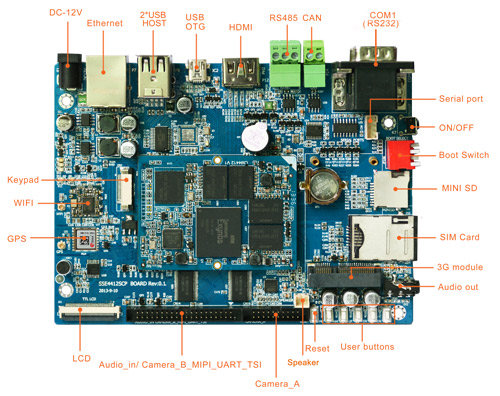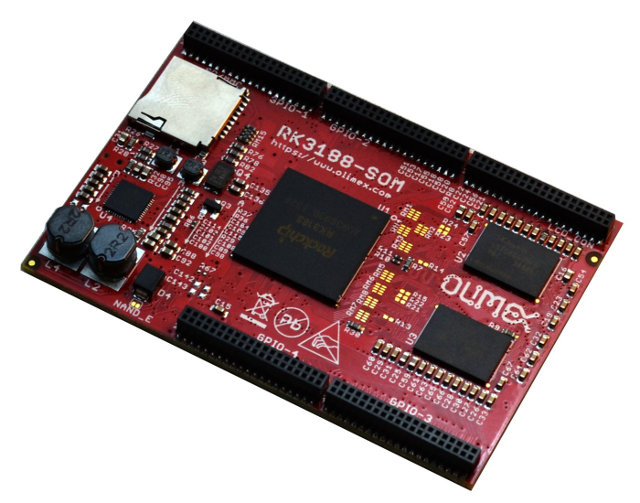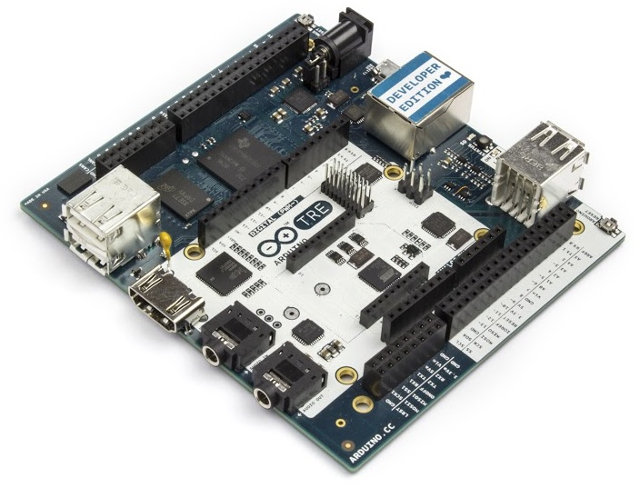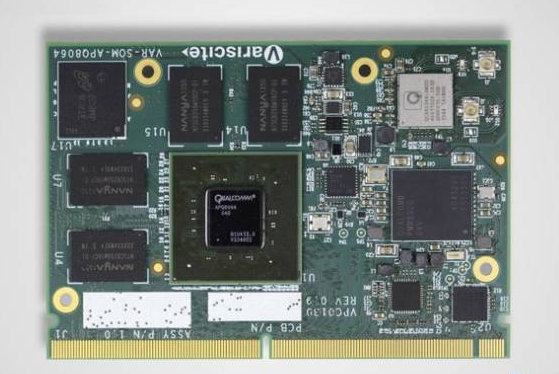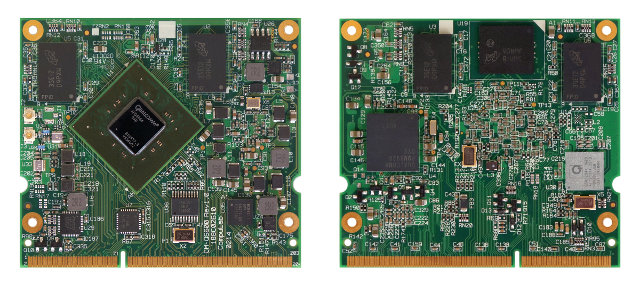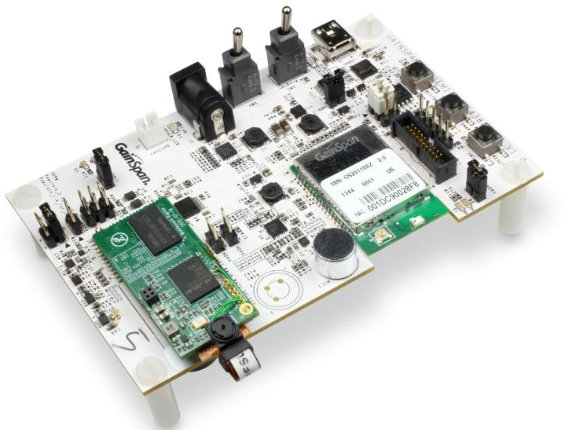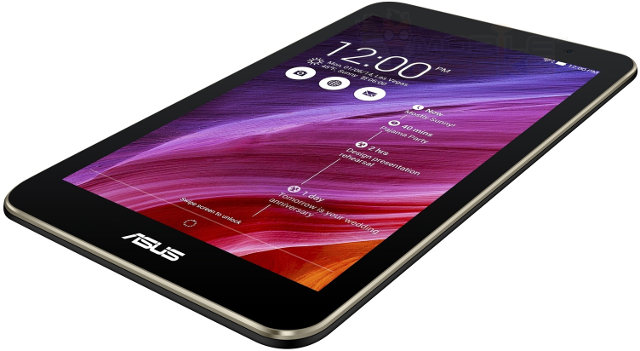Boardcon Technology Limited, a Shenzhen based ODM specializing in industrial boards and modules, has announced their EM4412 single board computer featuring MINI4412 core board powered by Samsung Exynos 4412 quad core Cortex A9 SoC a few months ago. The board, with ports such as CAN, RS-485, and a DB9 RS-232 connector, appears to have been designed with industrial applications in mind, such as point-of-sales (PoS), slot machines, car-mounted systems, factory automation, traffic management, and more. Boardcon EM4412 specifications: SoC – Samsung Exynos 4412 quad core Cortex A9 cores @ up to 1.6GHz and ARM Mali-400MP4 GPU System Memory – 2GB DDR3 RAM Storage – 4GB eMMC flash + mini? / micro SD card slot Display HDMI 1.4 – Up to 1080p30 24-bit RGB parallel LCD interface Optional 4.3″, 7″, or 10.1″ch resistive or capacitive touchscreen Camera interfaces: MIPI-CSI slave (mipi2L CH) Optional 2x camera interfaces supporting ITU 601/656 I/F up […]
How to Boot a Headless Linux Image on Amlogic S802 TV Boxes (Tronsmart Vega S89 Elite)
As some of you already know, I’ve been playing around with Tronsmart Vega S89 Elite, an Android TV Box powered by Amlogic S802 quad-core ARM Cortex A9r4 processor at 2 GHz. Today, I’ll show how to boot a headless Linux image on any Amlogic-based S802 TV Box from the network. The instructions can mainly be used as a starting point for developers, as it requires access to a serial terminal via UART, but if you’ve never done it before, the instructions should be easy enough to follow. Everything is loaded from the network, the kernel (via boot.img) is loaded via TFTP, and the rootfs (Linaro ALIP image) is mounted via NFS, so it’s nearly impossible to brick your device using the method provided. Linaro ALIP rootfs comes with LXDE, but at this stage, the desktop environment is not showing, even though my HDMI TV is properly detected by the drivers. […]
Olimex Showcases RK3188-SOM Module and RK3188-EVB Evaluation Board
After launching AllWinner and Texas Instruments SoMs earlier this month, Olimex appears to be on a roll, and the company showed some working prototypes of their upcoming Rockchip RK3188 quad core ARM Cortex A9 system-on-module, and corresponding evaluation board called RK3188-SOM-EVB including both a baseboard and a SoM. Preliminary specifications for RK3188-SOM: SoC – Rockchip RK3188 quad core ARM Cortex A9 @ 1.6Ghz with Mali-400 MP4 CPU System memory – 1GB DDR3 Storage – micro SD card slot, and optional 4GB NAND flash Power Management IC Debugging – debug UART console Misc – 2x buttons, 3x status LEDs Connectors – 5 GPIO connectors 2×20 pins 0.05″ step There will be two models: RK3188-SOM and RK3188-SOM-4GB, the latter adding 4GB NAND Flash. Both will be available in June for respectively 40 and 45 Euros per piece for 1k orders. For development and evaluation purpose, the company will also provide an open source hardware base board, RK3188-SOM-EVB, […]
Arduino TRE Powered by TI Sitara AM335x Enters Beta with 50 Developer Boards Available for Purchase
Most official Arduino boards are based on Atmel AVR MCUs that allow hobbyists to control GPIOs, or low level interfaces, which is fine for applications that do not require much processing power. In the last couple of years however, the Arduino team has gone up the processor scale, first with Arduino Due with an ARM Cortex M3, then Arduino Yun with a MIPS processor running OpenWRT, and there latest board Arduino TRE features a Texas Instruments Sitara AM3359 AM3358 processor capable of running any Linux distributions supporting ARM. The board was announced last year, and Arduino has now launched a beta program where developers can purchase one of the 50 “Arduino TRE Developer Edition” boards for 149 Euros + VAT. Arduino TRE specifications (Parts related to TI Sitara highlighted in green): SoC – Texas Instrument Sitara AM3359AZCZ100 AM3358 (See comments) ARM Cortex A8 processor @ 1 GHz with PowerVR SGX530 […]
Variscite VAR-SOM-SD600 System-on-Module Features Qualcomm Snapdragon APQ8064 SoC
It turns out Compulab is not the only (Israeli) company to have announced a Qualcomm Snapdradon 600 CoM this month, as Variscite has unveiled VAR-SOM-SD600 system-on-module with Qualcomm APQ8064 quad core SoC, up to 2GB DDR3, up to 64GB eMMC, Wi-Fi and Bluetooth BLE connectivity, and various signals available via a 314-pin MXM 3.0 connector. VAR-SOM-SD600 / VAR-SOM-APQ8064 specifications: SoC – Qualcomm Snapdragon 600 (APQ8064) quad core Krait 300 processor @ 1.7GHz with Adreno 320 GPU and Hexagon QDSP6 DSP System Memory – Up to 2GB DDR3 (Options: 512 MB , 1024 MB) Storage – Up to 64GB on-board eMMC (Options: 4 GB, 8 GB, 16 GB). 2x SD / MMC and SATA 1.5Gbps interface (via connector) Display HDMI 1.3a, up to 1920 x 1080 LVDS, up to 2048 x 1536 24-bit DSI, up to 2048 x 1535 24-bit Audio – Headphone driver, analog/digital microphone, Line In/Out, I2S interface, WCD9311 audio codec. Camera […]
Compulab Introduces $75 CM-QS600 Computer-on-Module Powered by Qualcomm Snapdragon 600 SoC
CompuLab has just announced their CM-QS600 Computer-on-Module (CoM) powered by Qualcomm Snapdragon APQ8064 quad-core SoC with up to 2GB DDR3 RAM, up 32GB of on-board eMMC, dual-band WiFi 802.11, Bluetooth 4.0, and Gigabit Ethernet network connectivity, as well as PCIe, USB, SATA, HDMI, LVDS, serial ports and I/O lines. CM-QS600 targets multimedia applications such as digital signage, IPTV and media players requiring low power, and a small form factor. Compulab CM-QS600 specifications: SoC – Qualcomm Snapdragon APQ8064 quad core Krait 300 processor @ 1.7GHz with Adreno 320 GPU and Hexagon QDSP6 DSP System Memory – Up to 2GB DDR3 Storage – Up to 32GB on-board eMMC, SATA interface (via connector) Display HDMI 1.4a, up-to 1920 x 1080 LVDS, up-to 2048 x 1536 Audio – Audio codec with stereo line-out, line-in, mic Camera – MIPI-CSI, up-to 20MP Connectivity – Gigabit Ethernet, Dual-band WiFi 802.11a/b/g/n, Bluetooth 4.0 low-energy Other I/Os PCI Express […]
GainSpan Introduces Full HD Video Application Development Kit for Wi-Fi IP Video Streaming Applications
GainSpan, a company providing low-power Wi-Fi solutions for the Internet of Things, and GEO Semiconductor, a semiconductor and software company specializing in camera and video solutions, have recently announced a Full HD resolution Video Application Development Kit (ADK) targeted at Wi-Fi video streaming applications in the surveillance, security and automotive markets such as battery or line powered IP cloud cameras, door bell cameras, baby monitors, toy cameras and automotive backup/drive recorder cameras The development kit features GainSpan GS2011MIZ low power IEEE 802.11b/g/n module, and GEO Semi MAX64380 1080p30 H.264 Camera CODEC, as well as MAXIM MAX9860 mono audio codec, and MAX98300 Class D amplifier. GainSpan Full HD Video ADK (GS-ADK-VideoGeo1080p) key features include: GS2011MIZ module with low power IEEE 802.11b/g/n compliant module with PHY rates up to 72 Mpbs. Supports Limited AP, Wi-Fi Direct with concurrent mode, WPS2.0. Wi-Fi Security – 802.11i, WPA/2, Personal and Enterprise, legacy WEP, TLS Full […]
Asus MeMo Pad 7 ME176C Android Tablet Powered by an Intel Quad Core Bay Trail SoC to Sell for $170
Until now, most Intel “Bay Trail” based tablets sold were running Windows 8.1, unless you checked on Aliexpress. It now appears Asus will soon sell an Android Kitkat tablet, ASUS MeMO Pad 7 ME176C, powered by Intel Atom Z3745 quad core SoC, and featuring a 7″ IPS display, 1 GB RAM and 8GB flash, for as low as $166. ASUS MeMO Pad 7 ME176C specifications: SoC – Intel Baytrail-T Z3745 quad core processor @ 1.33 GHz (Burst frequency: 1.86GHz) with Intel HD graphics. 2W SDP. System Memory – 1 GB DDR3 Storage – 8 or 16 GB NAND Flash depending on model + microSDXC card slot Display – 7″ IPS display (1280 x 800 pixel) Camera – 5.0MP rear camera + 2.0MP front camera Connectivity – Wi-Fi 802.11 b/g/n, Bluetooth 4.0, and GPS Audio – 1x Head phone/ Mic-in USB – 1x micro USB (OTG?) Battery – 3910mAh, 15 Whr […]


